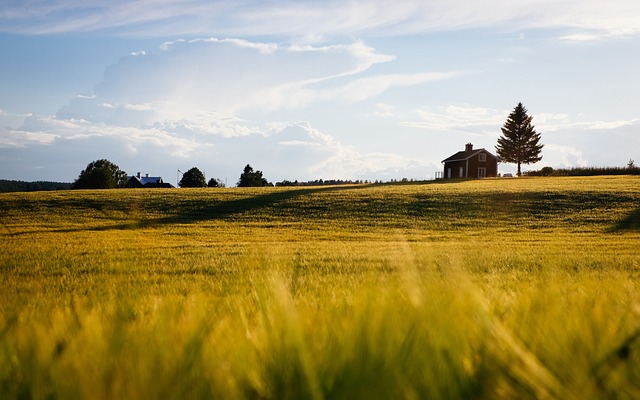The landscapes of England and Wales offer a wealth of natural beauty, from rolling hills and rugged coastlines to tranquil forests and sweeping moorlands. Public access law grants the public the right to enjoy these spaces for recreation, fostering a connection with nature and promoting well-being. In this article, Public Access Law, we take a look at the process and mechanism involved.
Free Initial Telephone Discussion
For a free initial discussion with a member of our New Enquiries Team, get in touch with us today. We are experienced in dealing with all the legal aspects of public access rights, and once instructed, we will review your situation and discuss the options open to you in a clear and approachable manner. Early expert legal assistance can help ensure you are on the best possible footing from the start and also avoid the stress of dealing with these issues on your own. Simply call us on 0345 901 0445 or click here to make a free enquiry and a member of the team will get back to you.
A Distinction from Scotland’s Right to Roam
It’s important to differentiate between the public access law in England and Wales and the right to roam enjoyed in Scotland. Scotland has a legal right of access enshrined in the Land Reform (Scotland) Act 2003, granting the public the right to access pretty much all land for responsible recreation, with few exceptions.
The Countryside and Rights of Way Act 2000
In England and Wales, the legal framework for public access is established by the Countryside and Rights of Way Act 2000 (CROW Act). This act introduced two key concepts for public access:
- Public Rights of Way (PROWs): A network of paths, bridleways, and byways legally designated for public use. These paths offer well-defined routes for walkers, cyclists, and horse riders, depending on the specific right of way.
- Open Access Land: Specific areas of land, including mountains, moors, heaths, downs, and some registered common land, where the public has the right to roam freely, without being restricted to designated paths.
Understanding Open Access Land
Open access land provides a sense of freedom and allows for a more immersive experience in the countryside. However, it’s crucial to understand some key points about open access:
- Not All Land is Open Access: While the CROW Act designated significant areas as open access, not all land in England and Wales falls under this category. It’s essential to check maps or consult the relevant authorities to determine if a specific area is open access.
- Respecting Excepted Land: Even within open access areas, there might be pockets of “excepted land” where public access is restricted. This can include private gardens, buildings, operational quarries, and some areas designated for conservation purposes.
- Responsible Enjoyment: The right to roam comes with the responsibility to act respectfully towards the land, wildlife, and local communities. This includes following the principles of the Countryside Code, such as leaving no trace, closing gates, and respecting livestock.
Finding Open Access Land
Several resources can help you locate open access land and plan your exploration:
- Defra’s Open Access Map: The Department for Environment, Food & Rural Affairs (Defra) provides an interactive map of open access land in England: http://www.openaccess.naturalengland.org.uk/.
- Natural Resources Wales: Similar to Defra, Natural Resources Wales maintains a map of open access land in Wales: https://naturalresources.wales/?lang=en.
- Ordnance Survey Maps: Traditional paper maps from Ordnance Survey often highlight open access land.
Public Access and Land Management
Landowners have a role to play in public access. While the CROW Act grants the public the right to access designated areas, landowners are responsible for managing their land and ensuring public safety. This may involve:
- Maintaining boundaries: Clearly marking the boundaries of open access land and any excepted areas.
- Providing signage: Providing clear signage to guide users and highlight any restrictions or hazards.
- Taking reasonable steps: Taking reasonable steps to ensure the safety of users on their land, such as repairing fences around steep drops or maintaining footbridges.
Blackstone Solicitors: Your Partner in Public Access
Public access law can be a complex area, and navigating your rights and responsibilities can be challenging. Whether you’re a landowner seeking guidance on managing open access land or a member of the public with questions about your right to roam, Blackstone Solicitors can be your partner. Our experienced property team can advise you on your legal position, help you navigate potential disputes, and ensure a positive experience for both landowners and the public enjoying the countryside.
In conclusion, public access law in England and Wales offers a framework for responsible public access to the outdoors. By understanding your rights and responsibilities under the CROW Act, landowners and the public can coexist harmoniously and ensure the continued enjoyment of our beautiful natural landscapes.
How we can help
We have a proven track record of helping clients deal with public access rights. We will guide you through the process and ensure all checks are carried out swiftly and efficiently and we firmly believe that with the right solicitors by your side, the entire process will seem more manageable and far less daunting.
How to Contact Our Commercial Property Solicitors
It is important for you to be well informed about the issues and possible implications of dealing with public access rights. However, expert legal support is crucial in terms of ensuring a positive outcome to your case.
To speak to our Commercial Property solicitors today, simply call us on 0345 901 0445, or click here to make a free enquiry. We are well known across the country and can assist wherever you are based. We also have offices based in Cheshire and London.
Disclaimer: This article provides general information only and does not constitute legal advice on any individual circumstances.



